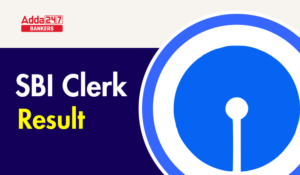Directions (1-5): Study the following information carefully and answer the question given below:
Eight persons - P, Q, R, S, T, U, V and W sits around a circular table and they likes different fruits viz.- Mango, Litchi, Apple, Orange, Pineapple, Grapes, Guava and Banana, but not necessarily in the same order. P sits second to the right of S. U sits second to the right of the one, who likes litchi. The one who likes Pineapple sits second to the left of the one, who likes Apple. Two people sit between V and Q. Persons who like Orange and Grapes are adjacent to U. P likes Banana. Q does not like Guava and grapes. The one who likes Banana sits second to the right of the one who likes Guava. R and T is immediate neighbour of each other. Person who likes Apple sits fourth to the right of the one who likes Litchi. Only one person sits between R and the one who likes Guava. W sits third to the left of the one who likes orange. W like Litchi. Only three person sits between S and the one who likes Grapes.
Q1. What is the position of Q with respect to the one, who likes apple?
Q2. Which of the following fruits does Q like?
Q3. Who sits opposite P?
Q4. Four of the following five are alike in a certain way and hence they form a group. Which one of the following does not belong to that group?
Q5. U likes which of the following fruit?
Directions (6-10): Each of the following questions below consists of a question and two statements numbered I and II given below it. You have to decide whether the data provided in the statements are sufficient to answer the question. Read both the statements and give answer.
Q6. Eight friends A, B, C, D, E, F, G and H are sitting around a circular table facing the center. Who is opposite to A?
I. D sits second to right of F and opposite to E. A is an immediate neighbor of B and C.
II. G sits third to right of E, who sits second to right of A.
Q7. Who among D, E, F, G, H and J got the highest marks in an exam?
I. D’s marks was more than G and J and E’s marks was less than that of F.
II. E scored less than G. J scored more than G and H. No one scored marks between F and G or F and H.
D>G,J, F>E
From statement II-
either J>H>F>G>E or J>G>F>H>E
From statement I and II both-
D>J>H>F>G>E or D>J>G>F>H>E
Hence D got maximum marks.
Q8. Among V, W, X, Y and Z, seated in a straight line facing south, who sits at the extreme end of the row?
I. W sits second to right of V. Z is not immediate neighbor of Y.
II. V sits third to left of Y. W sits on the immediate right of X.
We can say that Y and Z are on the extreme end of the line.
Q9. How is S related to E ?
I. W is father of X and P is grandson of E, who is wife of W.
II. G is mother of S and daughter in law of W.
Q10. Among five friends P, Q, R, S and T having different heights, who is the tallest?
I. R is taller than only one friend. Only one friend is taller than T. P is not shortest.
II. R is shorter than three persons. Only one person is taller than T. P is neither the tallest nor the shortest in the group. Q is the shortest in group.
S>T>P>R>Q
Q11. Which of the following symbols should replace the question mark (?) in the given expression in order to make the expressions P > B as well as T ≤ C definitely true?
P > C ? B ≥ N = T
When we put ≥ instead of ? sign then
P> C ≥ B ≥ N = T
In this expression P > B and T ≤ C both are true.
Q12. Which of the following should be placed in the blank spaces respectively (in the same order from left to right) in order to complete the given expression in such a manner that makes the expression B > N as well as E ≤ L definitely true?
B _ L _ O _ N _ E
In this expression B > N and E ≤ L both are true.
Q13. Which of the following symbols should be placed in the blank spaces respectively (in the same order from left to right) in order to complete the given expression in such a manner that makes the expression A > N and U > E definitely false?
A _ O _ U _ N _ E
In this expression A> N and U > E both are false.
Q14. Which of the following symbols should be placed in the blank spaces respectively (in the same order from left to right) in order to complete the given expression in such a manner that makes the expression P > Q as well as R ≤ S definitely true?
P _ S _ T _ Q _ R
In this expression P > Q and R ≤ S both are true.
Q15. Which of the following symbols should be placed in the blank spaces respectively (in the same order from left to right) in order to complete the given expression in such a manner that makes the expression A > B and C > D definitely false?
A _ E _ C _ B _ D






 GA Capsule for SBI Clerk Mains 2025, Dow...
GA Capsule for SBI Clerk Mains 2025, Dow...
 The Hindu Review October 2022: Download ...
The Hindu Review October 2022: Download ...
 SBI Clerk Prelims Result 2025 Out, SBI J...
SBI Clerk Prelims Result 2025 Out, SBI J...







